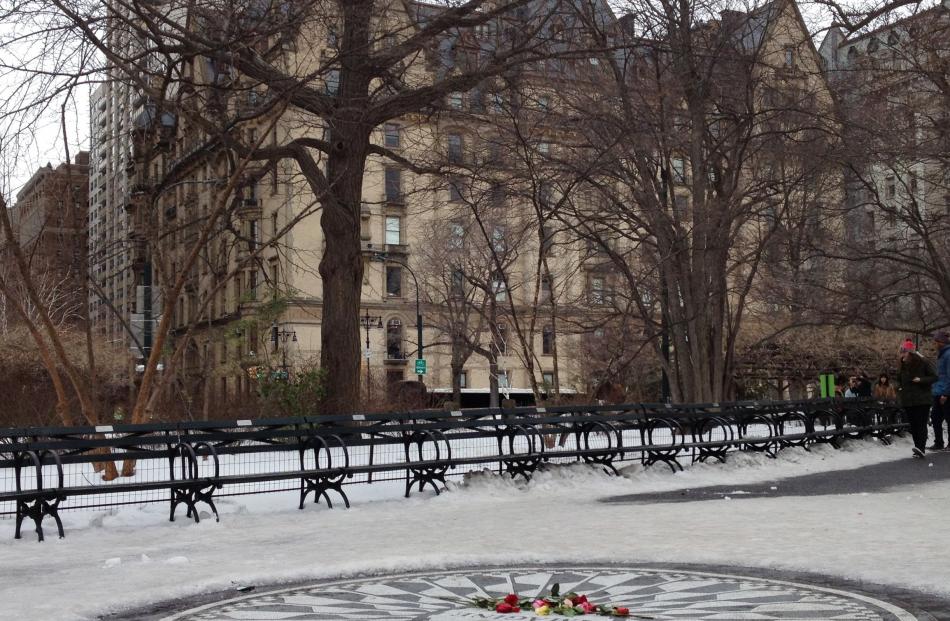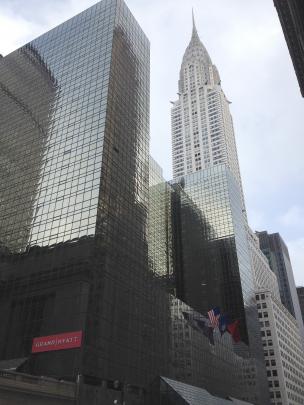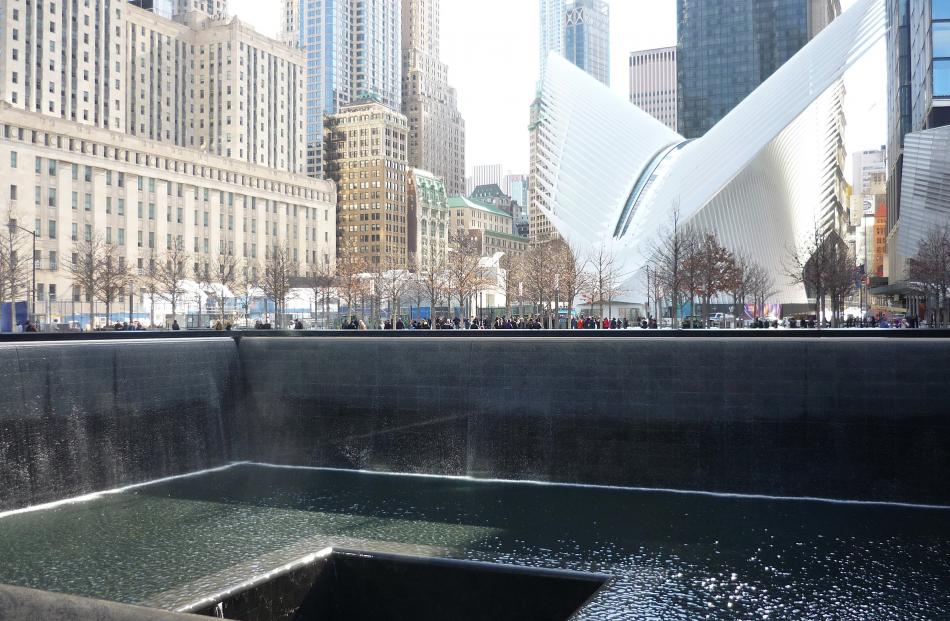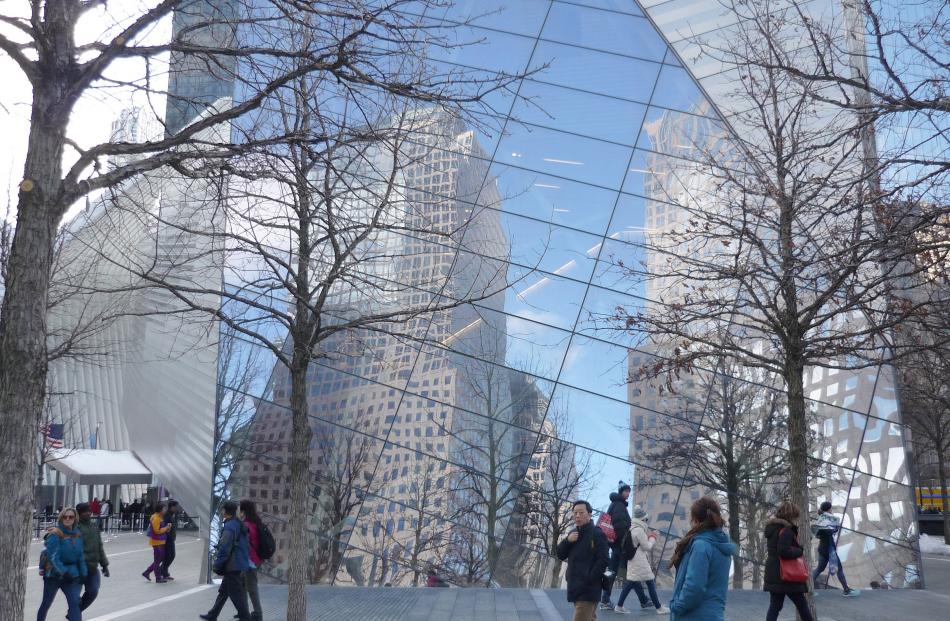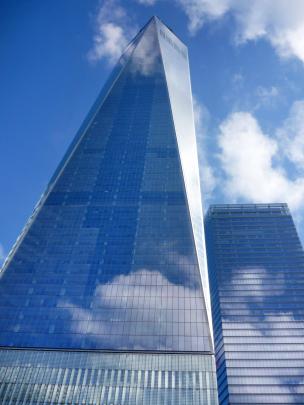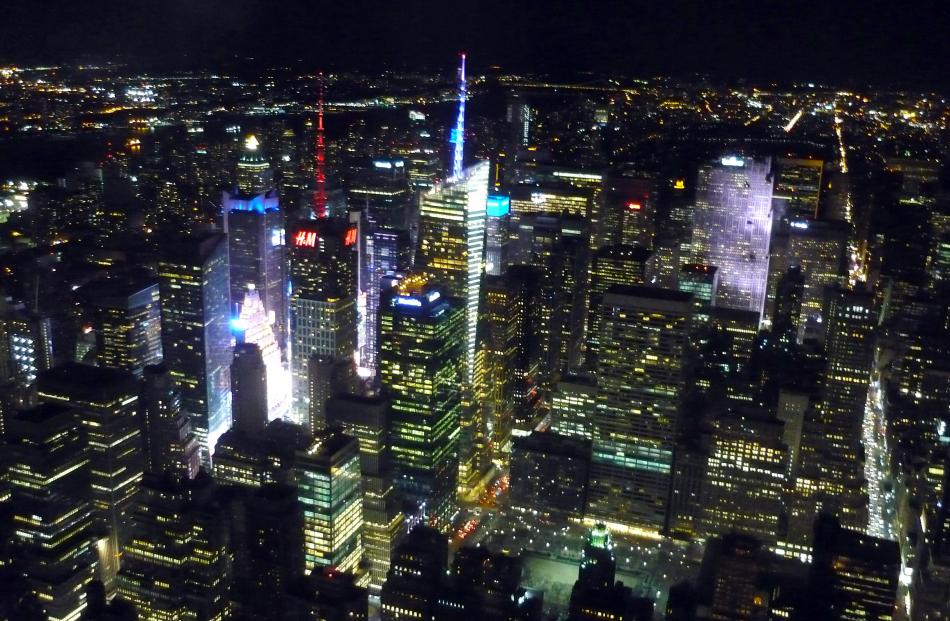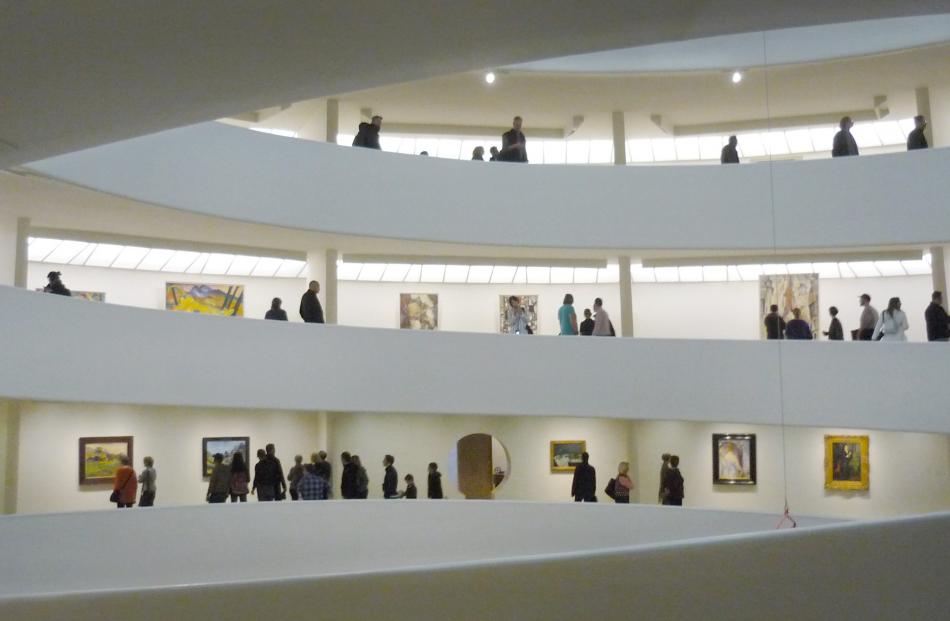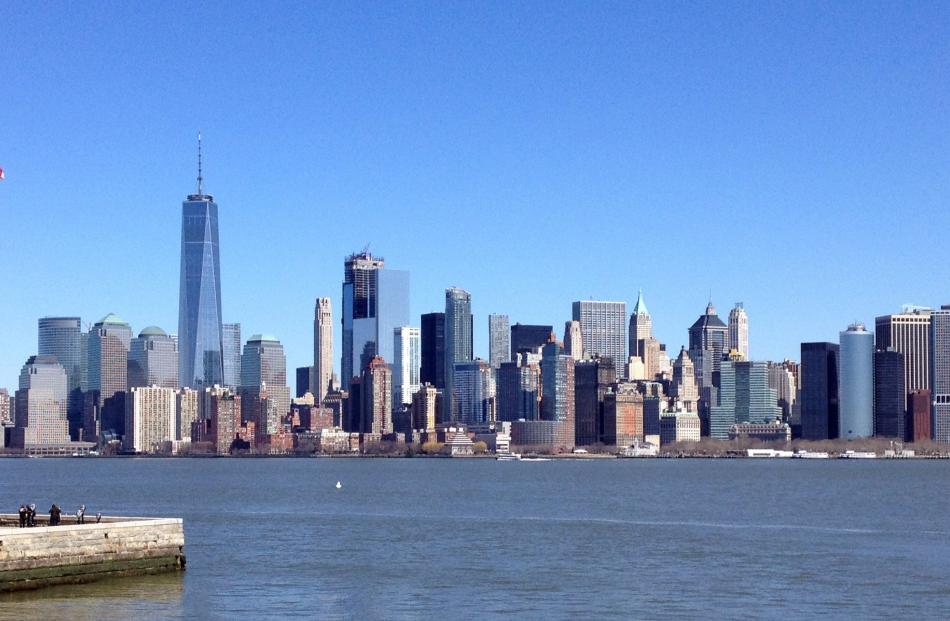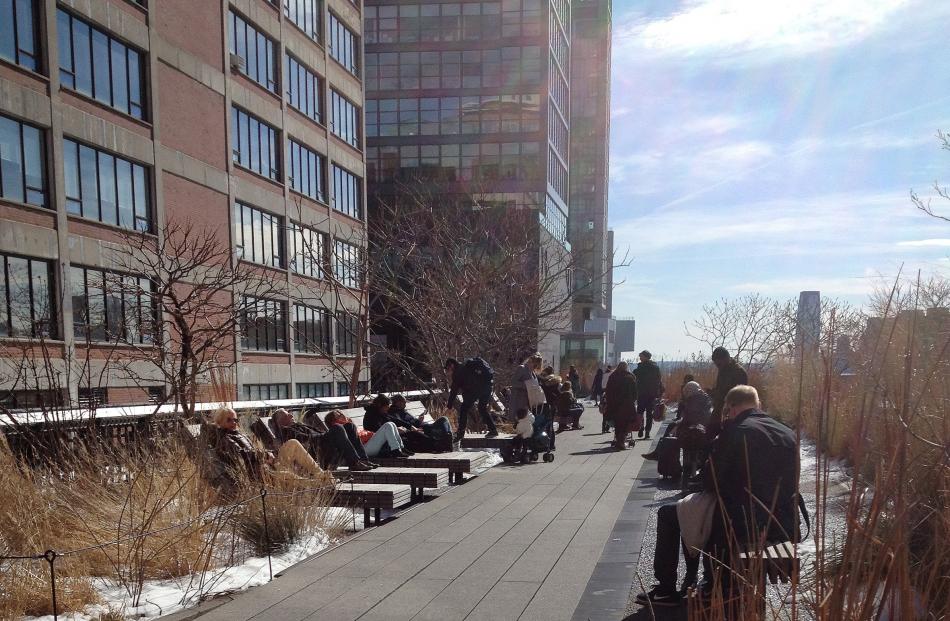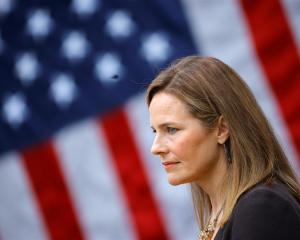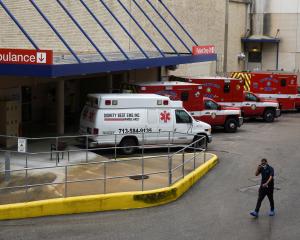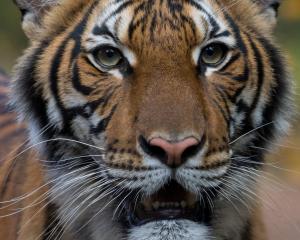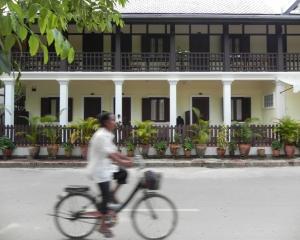A wintry New York is all kinds of cool, writes Helen Speirs.
As Super Storm Stella bore down on the East Coast of the United States in March, with at least 30cm of snow forecast for New York, the midtown Manhattan hotel at which I and members of a New Zealand delegation to the United Nations were staying advised all guests to stock up on two days' worth of food in case we got snowed in by the incoming blizzard and the city ground to a halt.
Panic buying ensued. News bulletins covered little else. It felt like an apocalyptic start to our visit in what was supposed to be a northern hemisphere spring.
In the finish, while other states were inundated, New York City lost only one working day to the white stuff. For us delegates at the Commission on the Status of Women, that meant an unexpected bonus day of sightseeing.
As we ventured out, workers with an array of contraptions were already in clean-up mode (fines are issued to homeowners, property managers, businesses and residents if snow is not cleaned off New York City streets within four hours in some cases).
Piled into metres-high-and-wide drifts at the side of Manhattan's streets and avenues, and with not enough sun getting through the skyscraper-lined streets and avenues, the snow turned to black ice courtesy of the city's grime, and then to slush as it slowly melted over the following days and weeks. It wasn't pretty, but Central Park was.
Cloaked in a snowy, muffling blanket, it was a welcome - if bitterly cold - respite from the city's constant soundscape (a cacophony of construction noise, vehicle engines, horns and sirens). The park's lakes were completely frozen over, and the scene picture perfect. Despite the biting cold, runners and dog walkers were numerous. Old-fashioned streetlights, some of which were lit even during the day, contributed to the magical, olde-world feel, reminiscent of CS Lewis' Narnia.
My priority was the southwest corner of the park, containing Strawberry Fields, the living memorial to the late Beatle, John Lennon, gunned down by a crazed fan outside his exclusive parkside apartment building. His widow Yoko Ono still lives in the Dakota building, which overlooks the mosaic memorial emblazoned with the word ``Imagine'', the title of Lennon's much-loved ode to peace.
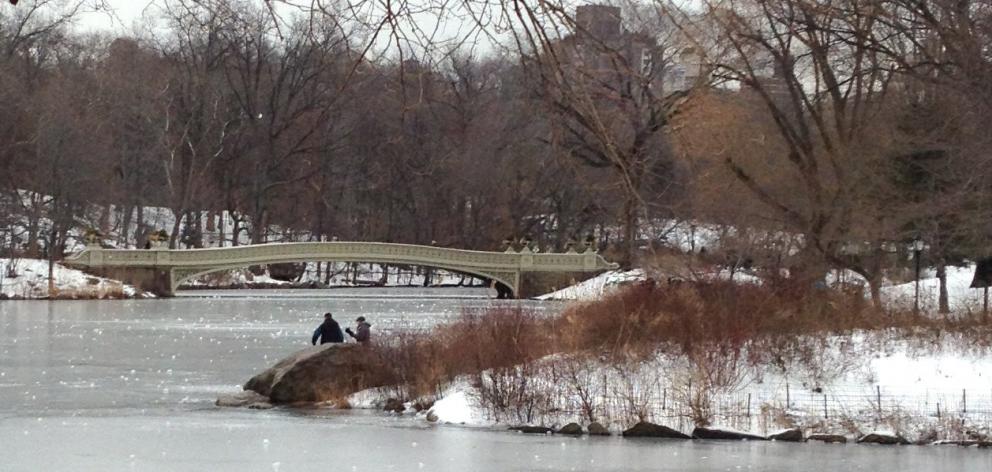
We made the Central Park stop as part of an open-top hop-on, hop-off bus tour - bracing at that time of year, but still a great way to orient yourself and see the main sights in a short space of time.
I was surprised by how walkable Manhattan is, however. The densely populated island is only 59sq km. You are always within sight of a well-known monument and, because of traffic, walking often proved quicker and easier than using the omnipresent yellow cabs or buses - and even the subway for short distances.
Modern architecture sits alongside older buildings in a striking and complementary mix.
I loved the triangular Flatiron building, but my pick of the landmarks was the Chrysler Building. Constructed in 1930 to house the car maker's headquarters, it was the world's tallest building until it was surpassed by the Empire State Building in 1931. This striking Art Deco monument, with its terraced steel crown and eagles gracing its upper corners, became something of a touchstone (read obsession) for me, perhaps because it was the view I opened my hotel blind to immediately upon arrival. It was also a great navigational aid.
Fellow delegates on the opposite side of our hotel looked out on the commanding 102-storey Art Deco Empire State Building. A trip to the top of that central landmark is a must. A couple of us went up late at night, a great time to see the lights of the city (the tower itself also provides a striking light show at night) but also to beat the worst of the queues. The 86th floor, with its outdoor observatory deck, offered a bitterly cold and blustery perspective, but the top-storey view is well worth splashing out extra for - as we did. There are 360deg panoramic views of Manhattan and beyond and the internal lights are dimmed for better viewing and photographs. Looking south you can follow the bright trails of Fifth Ave and Broadway downtown to the financial district; to the west is the enormous circular arena that is Madison Square Garden, the Hudson River and New Jersey; to the north are the bright lights and billboards of Times Square plus Central Park; and to the east is the United Nations headquarters and across the East River to Long Island and Queens.
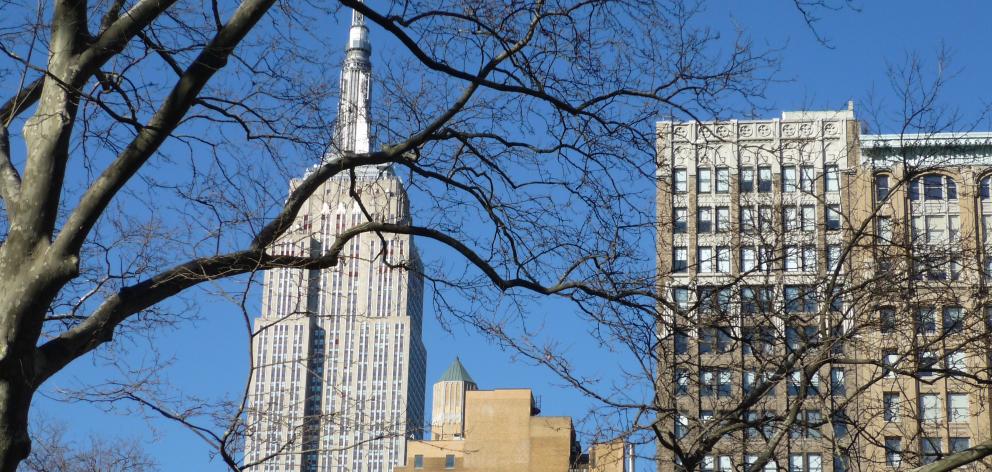
The Statue of Liberty is another unmissable attraction - whether you go to the top or not. A free ride on the Staten Island ferry used by commuters offers a great sail-by option if funds and time are limited, but a trip to Liberty and Ellis islands is well worth it (I ended up doing them all). Make sure you leave half a day if you want to get the most out of the redeveloped Museum of Immigration on Ellis Island, the now-defunct centre where millions of immigrants were once processed across the water from Lady Liberty and in tantalising view of Manhattan. I found the experience an unexpectedly moving one, made particularly poignant given the current political climate under the Trump Administration. I spent time reflecting on the stirring words from The New Colossus, the sonnet by Emma Lazarus, written as a fundraiser for (and etched on a plaque inside) the pedestal on which the Statue of Liberty stands: ``Give me your tired, your poor, / Your huddled masses yearning to breathe free, / The wretched refuse of your teeming shore. / Send these, the homeless, tempest-tossed to me.''
Equally moving is the 9/11 Memorial and Museum, which is also worth dedicating half a day to. A tribute to the nearly 3000 people killed in the terror attacks of September 11, 2001, at the World Trade Centre, and in Shanksville and at the Pentagon, as well as the six people killed in the 1993 World Trade Centre bombing, it is a sobering experience, which feels at once gratuitous and respectful. The entire site has been the subject of much controversy because of cost and delays and it is still not complete. For an outsider, however, it is impressive.
A group of us made our way to the site via the subway to the new transport hub, emerging into the new light-filled Oculus building, which resembles a dove taking flight. The names of all those who died in the attacks are inscribed into panels edging two giant memorial pools, which are built on the footprints of the felled twin towers next to the memorial museum. Surrounded in water and glass, the area is a reflective one in every sense. Towering overhead is the new One World Trade Centre, now the tallest building in New York and the world's sixth-highest.
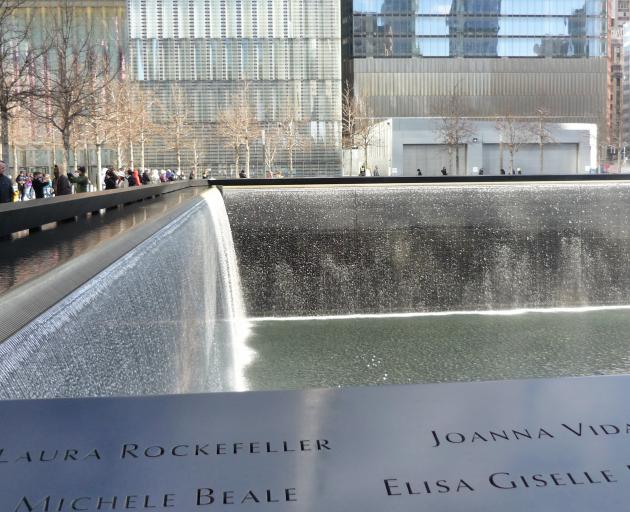
Hours can be spent in the Memorial Museum alone. It contains remnants from the towers, a crushed fire engine that had carried some of the first responders, video clips about the victims, and much more. A whole wall is dedicated to an artist's work depicting descriptions of the colour of the sky that fateful day. In large writing amid the sea of blues is a powerful quote by Virgil: ``No day shall erase you from the memory of time.'' Already moved, I was shocked to read a small plaque at the foot of the collage informing visitors that the remains of many who perished at the site lie behind the wall.
The area is in the financial heart of the city, of course, and any poignant thoughts are soon left behind with a visit to nearby Wall St, home to the New York Stock Exchange, the ultimate capitalist symbol.
While in the area a walk across the iconic Brooklyn Bridge is a rite of passage for visitors. During the day when three of us stepped out, it was jam-packed with hordes of tourists, and locals cycling between the boroughs of Manhattan and Brooklyn. It offers a refreshing sense of space after the claustrophobic streets and there are fantastic views back towards the Manhattan skyline. A saunter across at dusk when the city lights up would be stunning.
Another brilliant way to stretch your legs and take in the sights is on the High Line, a 2km walkway, described as a ``linear park'', created on an elevated section of disused railway line in the old meatworks district. I would love to see it in all its flowering glory, but even in winter/spring it was interesting walking at a different level through an inspirationally redeveloped area.
The project was part of the Global Designing Cities Initiative, now headed by former Dunedin woman Skye Duncan.
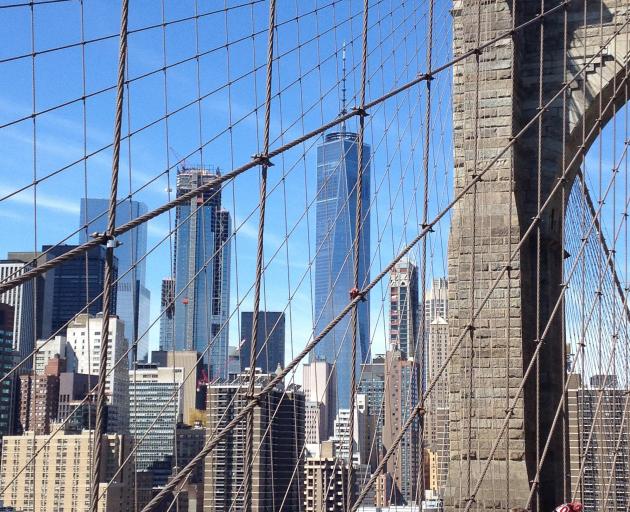
No visit to the Big Apple would be complete without a stroll up Broadway and around Times Square, renamed after The New York Times newspaper moved its headquarters there. This is big, bold, bright and brash corporate America, where giant advertising billboards compete for attention, agents compete for the tourist dollar and world-famous shows compete for their slice of the cultural pie.
A Broadway show is a must. I treated myself to Sunset Boulevard at the Palace Theatre, starring Glenn Close. A seat in the gods was expensive, even booking ahead, but bargains can be had through various means if you are prepared to chance your luck on the day. The pomp and professionalism ensure the experience will be memorable whatever show you see - and there are many dozens from which to choose at any one time.
My sightseeing was crammed into evenings and a couple of weekends, so many cultural offerings sadly had to be sacrificed. I made a speedy tour of the New York City Library (largely to see the stunning restored ceiling in the Rose Reading Room), made a brief stop at the National Museum of the American Indian, couldn't fit in a visit to the Metropolitan opera or the Museum of Modern Art, and had only an hour or so at the magnificent and vast Metropolitan Museum of Art (where you could easily lose yourself for weeks on end). The Guggenheim museum, however, offers a perfect quickish visit. Not only is the collection of modern masterpieces jaw-dropping, the Frank Lloyd Wright-designed spiral building is worth a look in its own right.
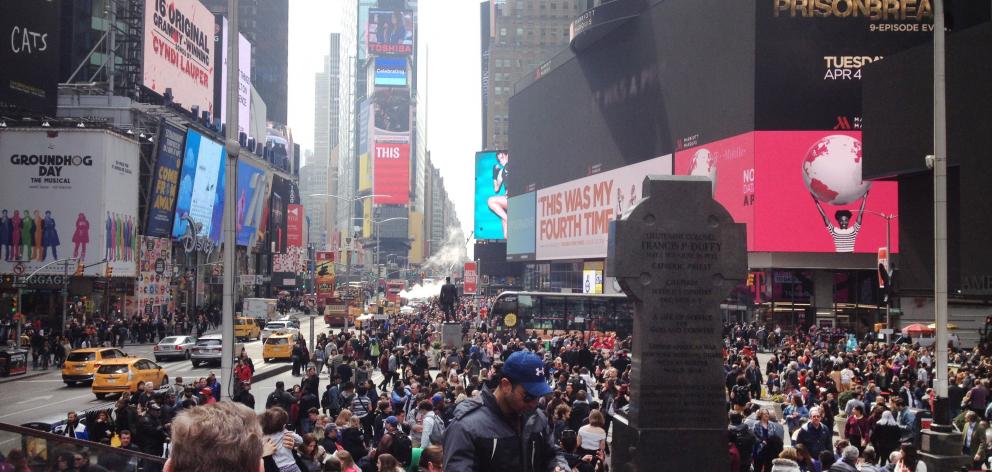
You can easily shop 'til you drop in New York, but if you are pushed for time, as I was, a trip to Macy's flagship Herald Square department store ticks most of the famous fashion brand boxes.
Amid the sightseeing, food and drink stops are a must, and there is everything to choose from, from diners and delis to chic bistros and high-rise cocktail bars. A favourite find (and that of many others as the Friday and Saturday night queues attested) was Momosan, a Japanese ramen and sake restaurant mere doors away from our hotel in a block where it seemed most nationalities and styles of food were available. Staff greet each diner or group which enters with a loud ``irasshai'' (or welcome). The warm reception summed up my overall experience of the city.
Also within five minutes' walk was the Grand Central Station market, where beautiful produce of all descriptions is on tantalising display. The station itself is a stunning piece of architecture, too. Once inside, like everywhere in New York I found, it pays to look up ... you'll be starstruck.

